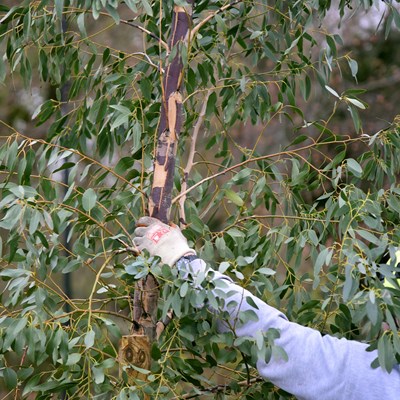A MAJOR plan that guides the management of Leicester’s ‘urban forest’ has been formally reviewed to reflect the progress that’s been made during 2021/22.
The city council’s tree strategy was published in November 2018, setting out the council’s commitment to maintaining and replenishing its tree stock and improving the quality of the trees in its care.
It also reaffirmed the council’s policy of planting more than one tree to replace any tree that is lost – and recognised the important role that trees play in reducing air pollution, supporting wildlife and mitigating the impact of floods.
Now, the council’s trees & woodlands team have revisited the five-year plan to review the progress that’s been made in the past 12 months.
The review report – presented to the Neighbourhood Services Scrutiny Commission – notes that the city council planted 19 new trees for every tree lost in 2021/22, and planted a total of 11,753 trees in Leicester in 2021/22, with most of them (10,396) planted in schemes supported by the Forestry Commission, Earthwatch or Trees for Cities.
These include around 4,200 trees at city schools, 3,400 small trees in Appleton Park, 905 trees in Monks Rest Gardens – and 80 large trees, 60 fruit trees and 1,875 small trees in Western Park.
In addition, around 750 small trees were given out to the public to mark the Queen’s Platinum Jubilee, while a trio of trees – chosen for their red, white and blue foliage – were planted in Abbey Park as part of The Queen’s Green Canopy project.
In the same period, 607 trees – mostly in poor condition – were felled, including 60 diseased trees in Western Park, which were removed to limit the spread of a deadly pathogen called phytophthora.
All by-product waste from tree works was recycled and repurposed as biofuel, woodchip or logs.
An action plan for managing the impact of a second deadly pathogen – ash dieback – will be published during 2022/23. The disease – first recognised in the UK in 2012 – is having a devastating effect on ash trees across Europe and is now well-established in Leicester. It is estimated that ash dieback will result in the loss of around 15,000 ash trees from the city council’s tree stock over the next 10 years.
Deputy city mayor for the environment Cllr Adam Clarke said: “This formal review gives us an opportunity to look back on what we’ve achieved and renew our commitment to increasing the number of trees in the city council’s ownership, while ensuring that the quality of our tree stock continues to be improved.
“Trees are hugely valuable to our city, bringing environmental and ecological benefits and vastly improving the look of our streets, parks and open spaces – while supporting our well-being.
“But there are challenges for our trees and woodlands team, as deadly pathogens such as phytophthora and ash dieback affect the trees in the city, and tree species that are more resistant to disease must be planted in their place.
“Our tree strategy will continue to guide the management of the city’s trees and woodlands through these challenging times – and help ensure that the city’s urban forest is maintained and expanded for future generations to enjoy.”
Leicester City Council manages a tree stock of 168,000 individual trees and 111 hectares of woodland.
This includes trees in parks and open spaces, on highway verges, on housing estates, within the grounds of schools, and around community facilities.
Tree canopy covers around 16% of the city.
Picture caption: A blue-leafed eucalyptus tree is planted in Abbey Park as part of the Queen's Green Canopy project.
